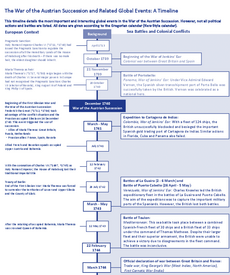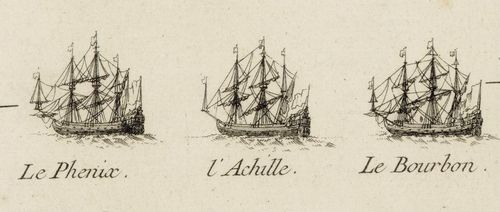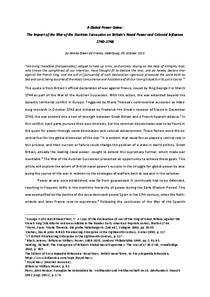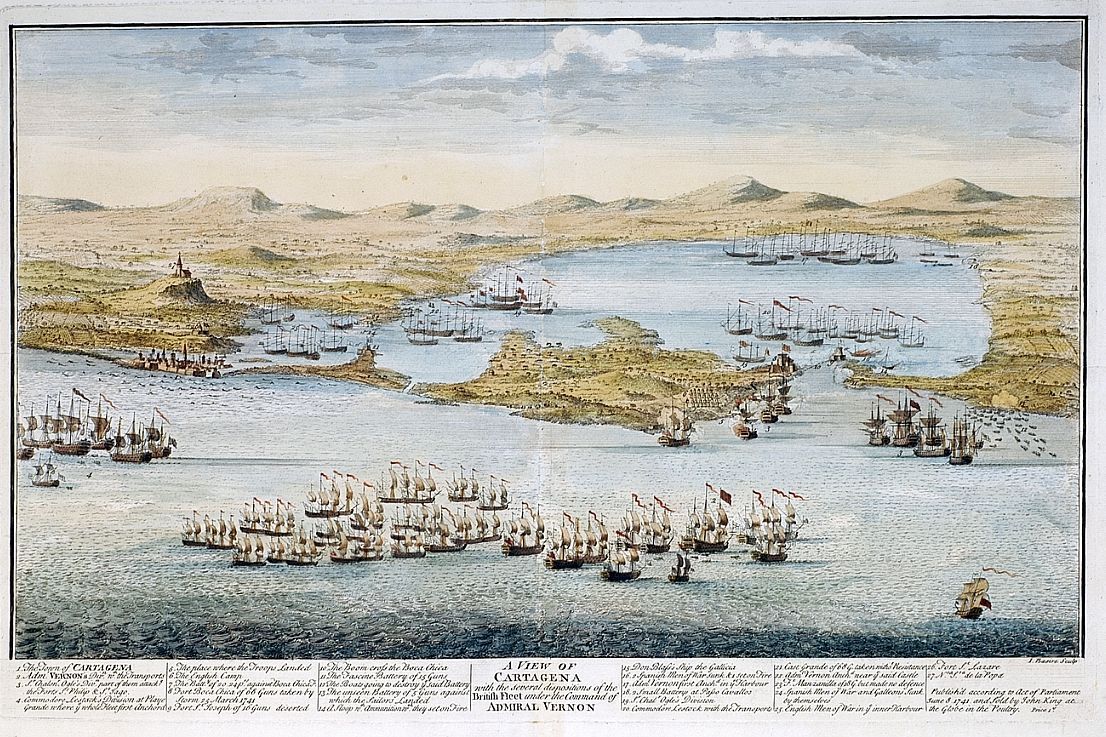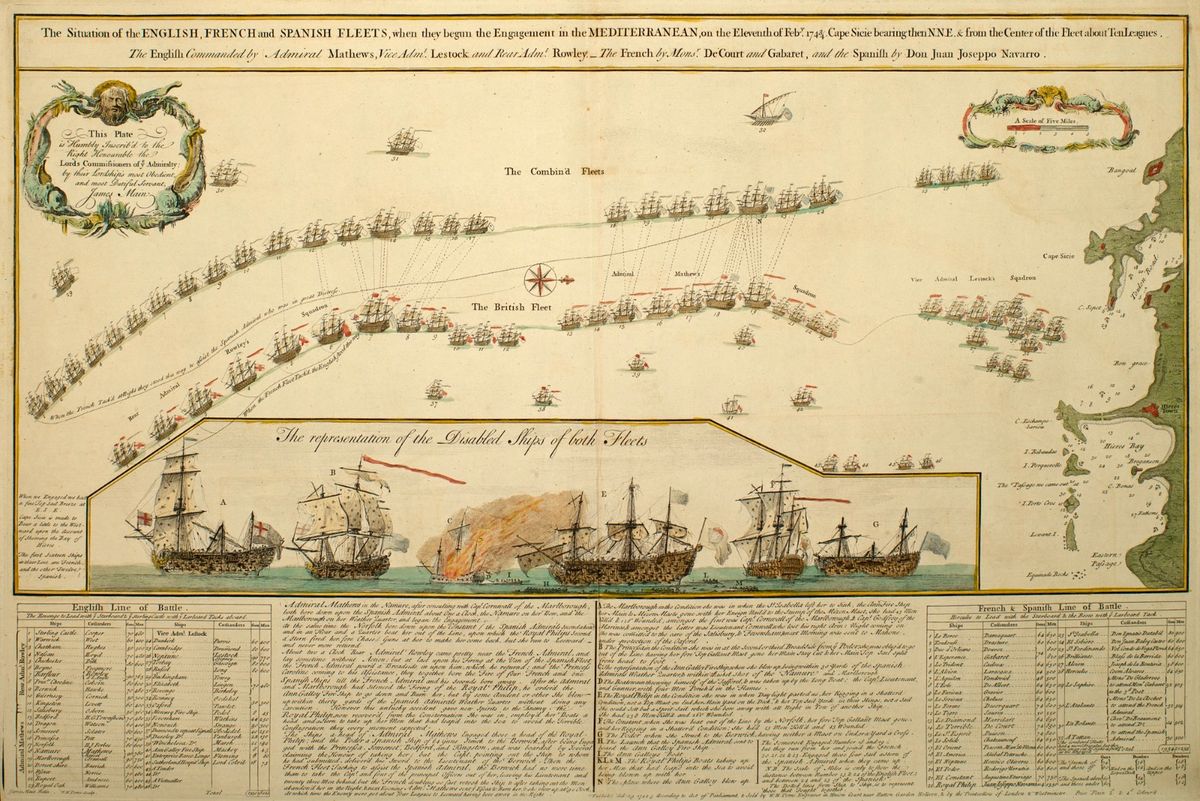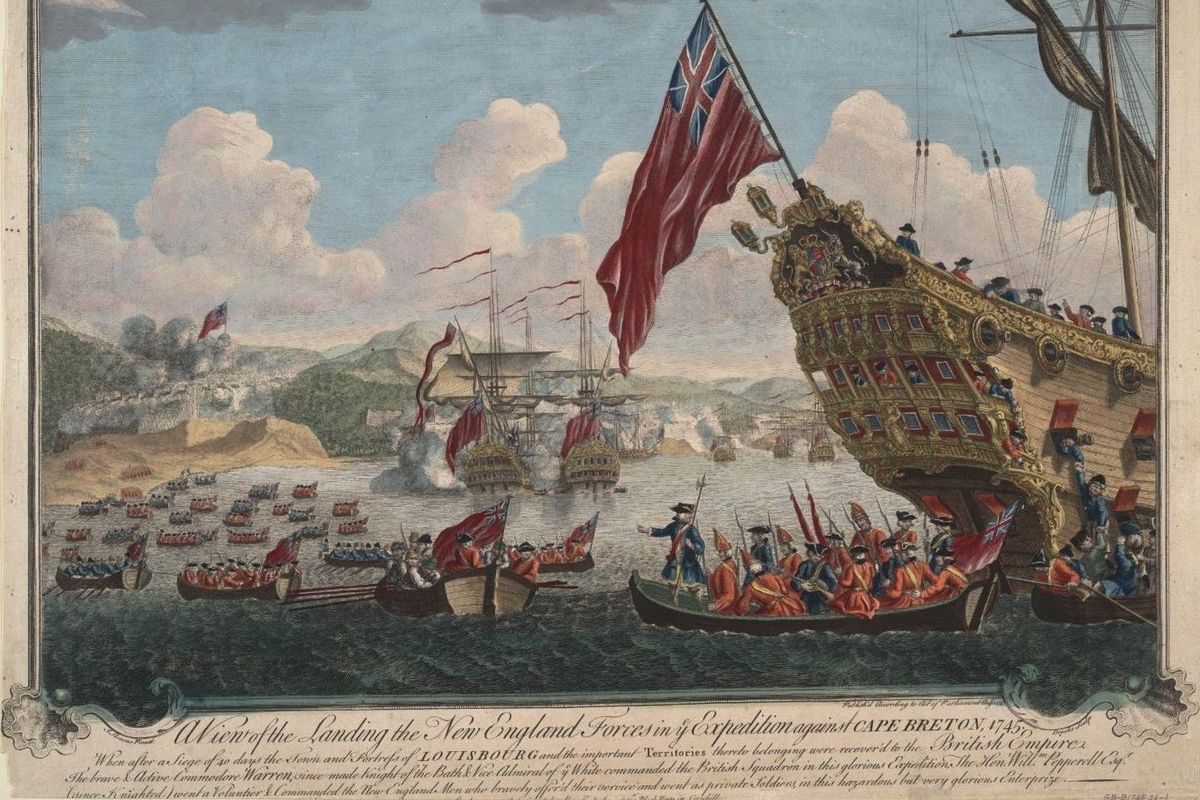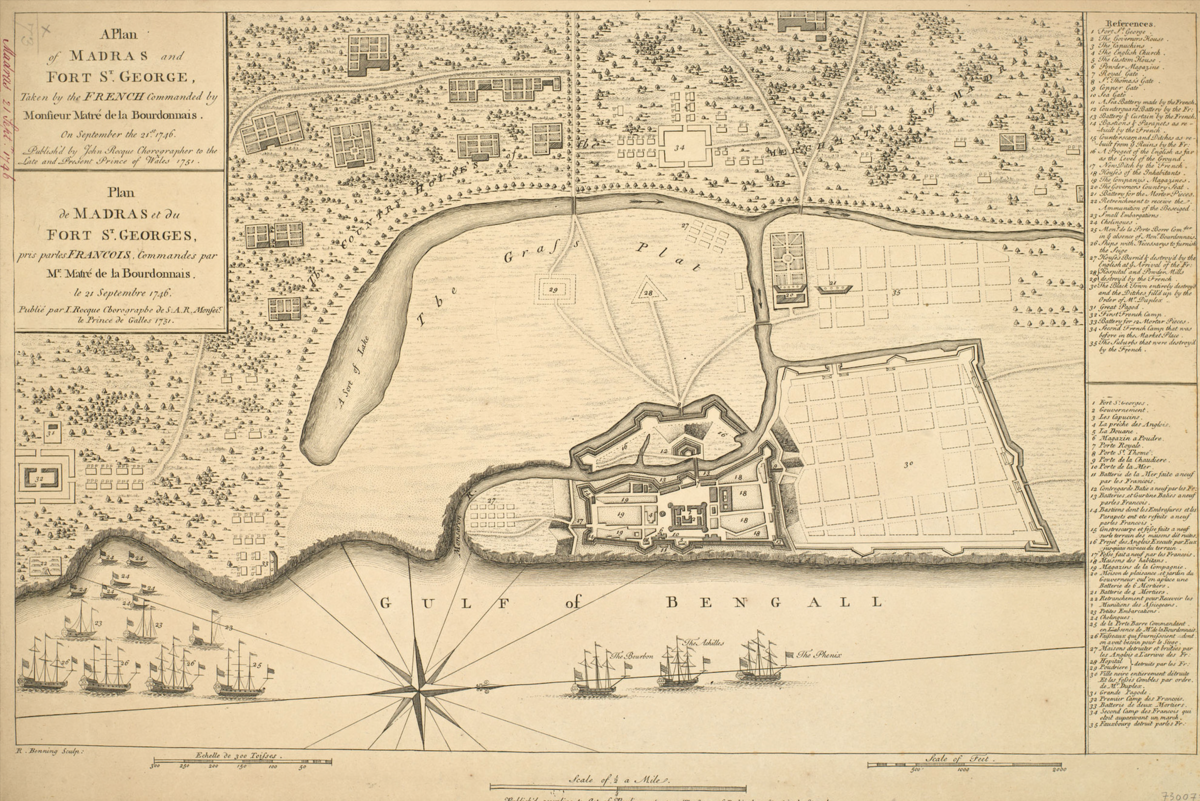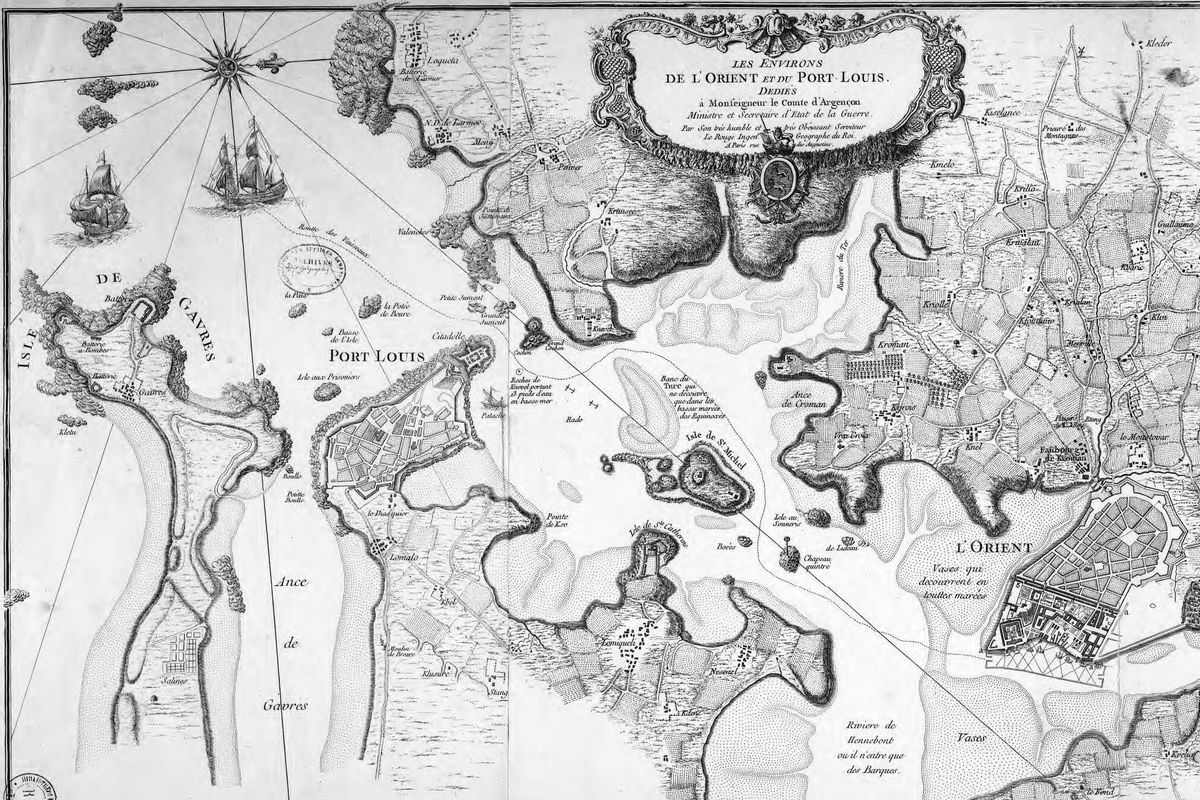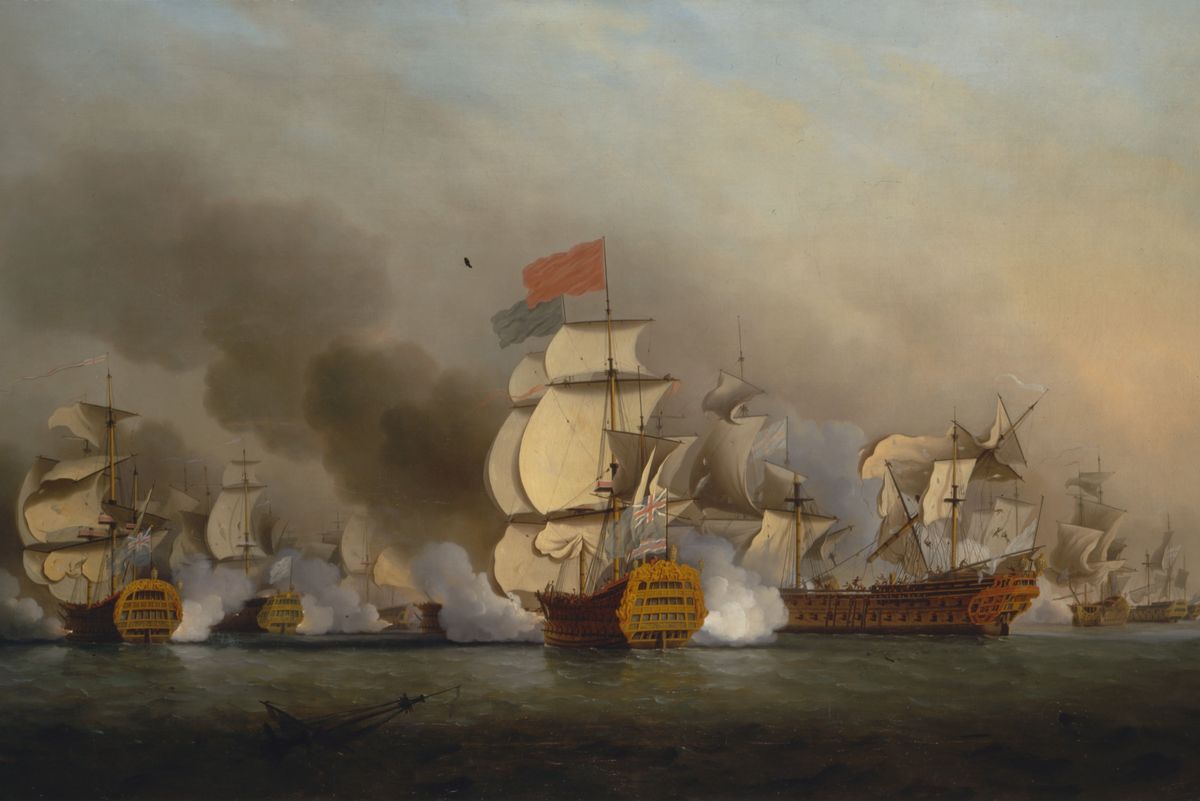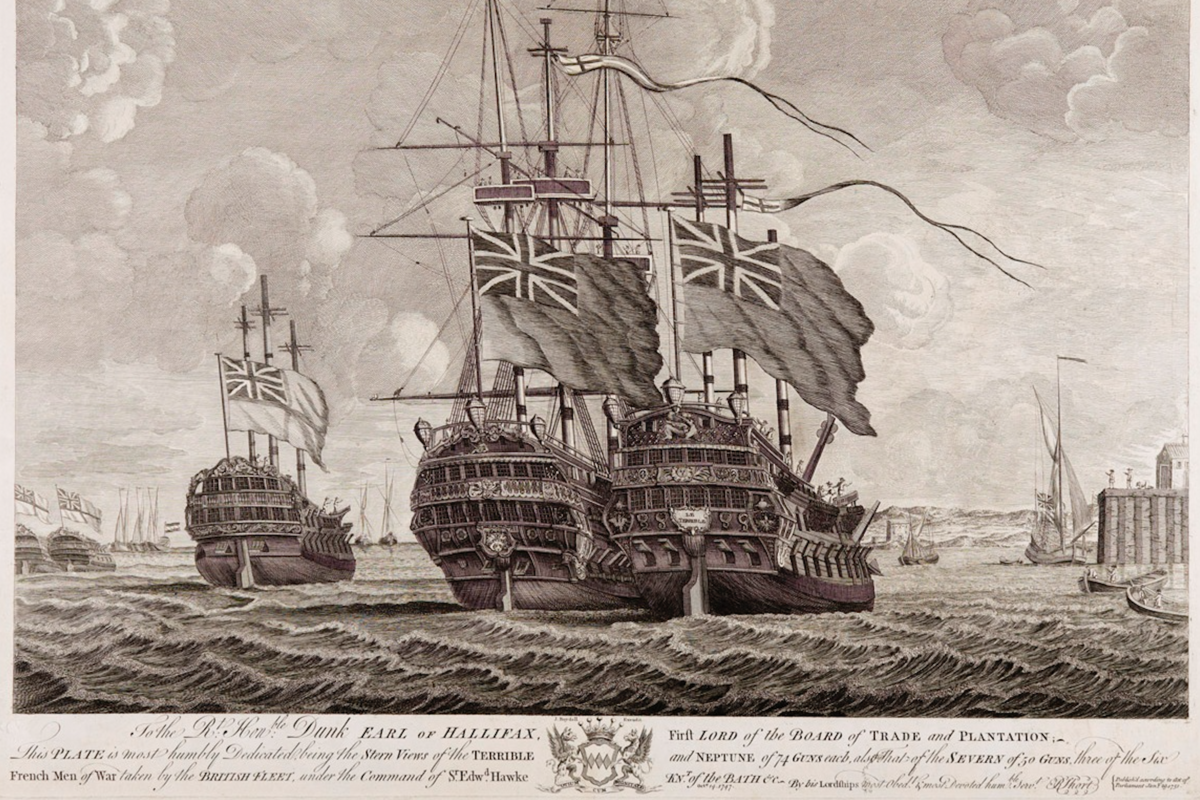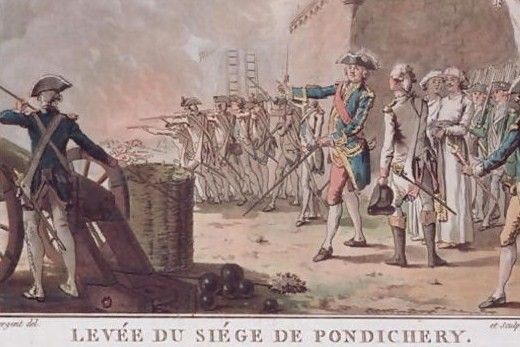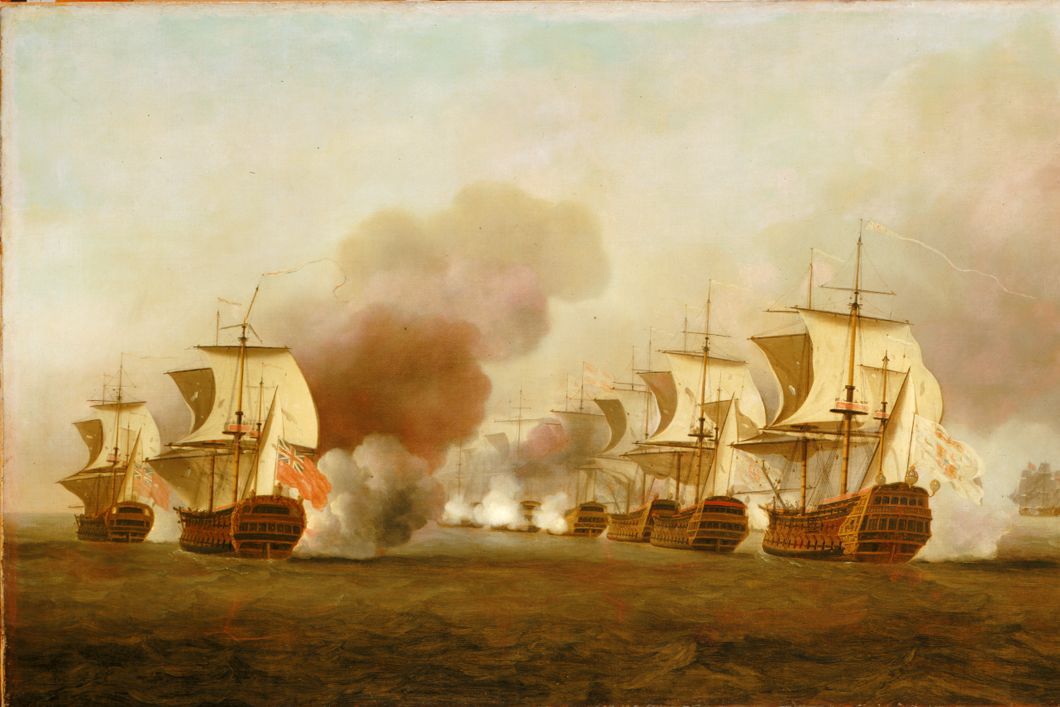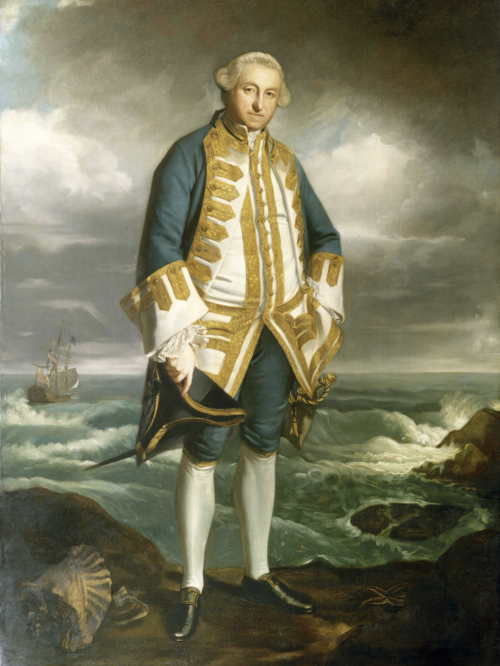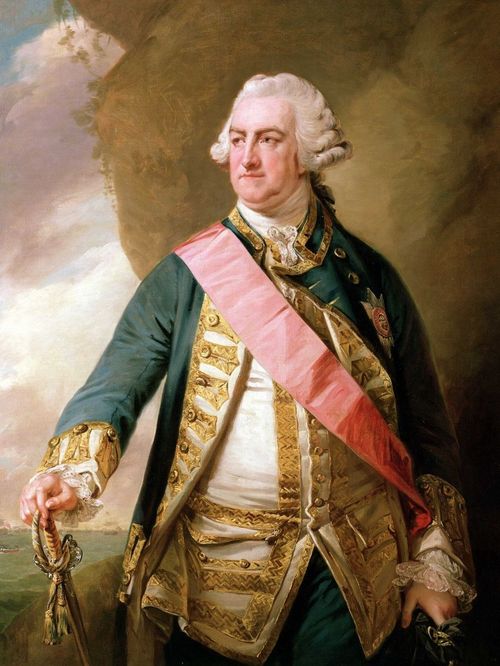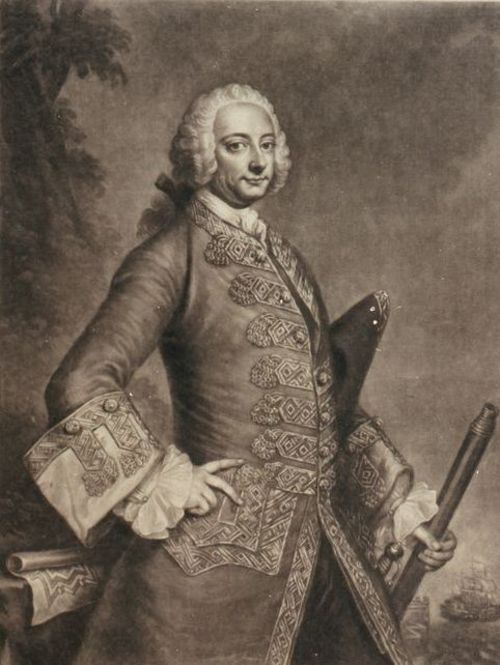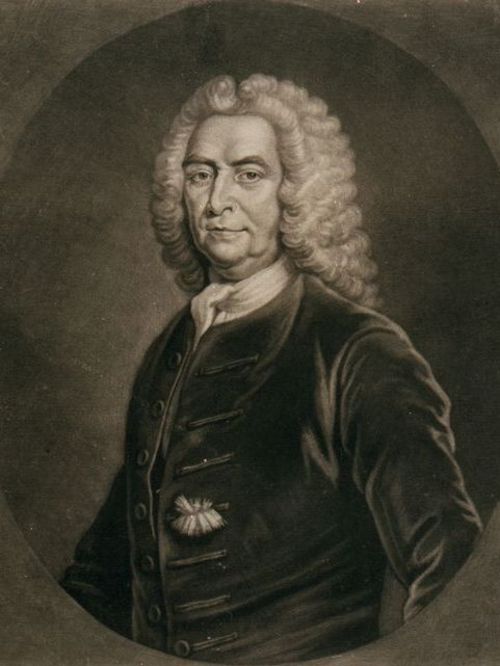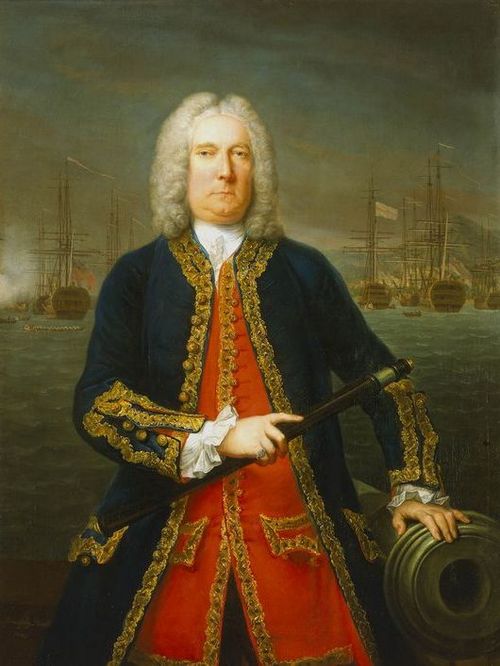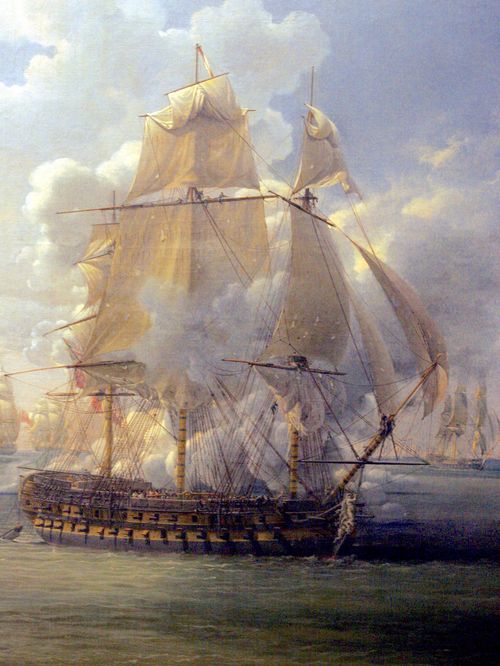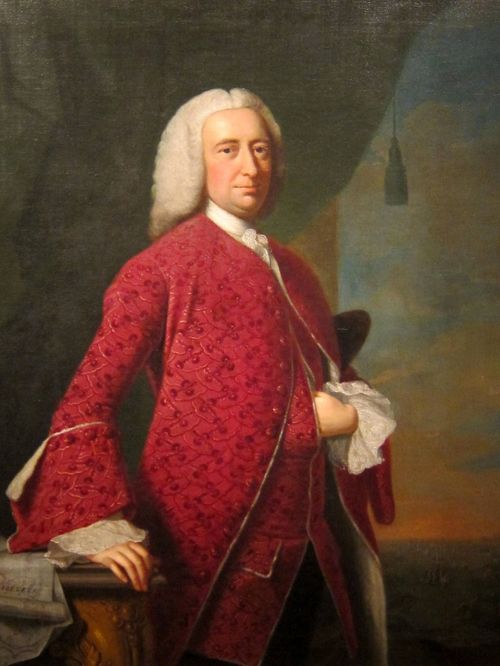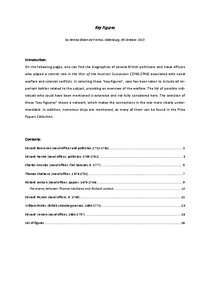The War of the Austrian Succession (1740-1748)
Timeline of the war:
Download as a PDF file
Literature recommendations:
Anderson, Matthew Smith: The War of the Austrian Succession, 1740-1748, New York 1995.
Harding, Richard: The Emergence of Britain’s Global Naval Supremacy. The War of 1739-1748, Woodbridge 2010.
Swanson, Carl. E.: American Privateering and Imperial Warfare, 1739-1748, in: The William and Mary Quarterly 42/3, 1985, pp. 357-382.
List of figures:
The flagship Royal Sovereign saluting at the Nore, by L. de Man (circa 1725), oil on canvas, https://commons.wikimedia.org/wiki/File:The_flagship_Royal_Sovereign_saluting_at_the_Nore,_by_L_de_Man_(cropped)_detail.jpg, public domain.
Trois des vaisseaux de La Bourdonnais devant Madras en 1746, https://commons.wikimedia.org/wiki/File:Trois_des_vaisseaux_de_La_Bourdonnais_devant_Madras_en_1746.jpg, public domain.
A View of Cartagena by Isaac Basire (1741), commons.wikimedia.org/wiki/File:A_View_of_Cartagena_(Isaac_Basire)_1741.jpg, public domain.
A map of the naval Battle of Toulon or Cape Sicié, 22-24 February 1744. War of the Austrian Succession (1740-48), https://militarymaps.rct.uk/war-of-the-austrian-succession-1740-8/toulon-1744-this-plate-is-humbly-inscribd-to, public domain.
Vue du debarquement anglais pour l attaque de Louisbourg 1745 (1747), https://commons.wikimedia.org/wiki/File:Vue_du_debarquement_anglais_pour_l_attaque_de_Louisbourg_1745.jpg, public domain.
Madras, 1746 by Richard Benning/ John Rocque, etching and engraving; printed on paper(1751), https://commons.wikimedia.org/wiki/File:Madras,_1746_RCIN_730073.jpg, public domain.
Les environs de l'Orient et du Port-Louis by Georges-Louis Le Rouge (1750), https://commons.wikimedia.org/wiki/File:Les_environs_de_l%27Orient_et_du_Port-Louis_par_Georges-Louis_Le_Rouge.jpeg, public domain.
Vice Admiral Sir George Anson's Victory off Cape Finisterre by Samuel Scott, oil on canvas (1749), https://commons.wikimedia.org/wiki/File:Samuel_Scott_-_Vice_Admiral_Sir_George_Anson%27s_Victory_off_Cape_Finisterre_-_Google_Art_Project.jpg, public domain.
Trois vaisseaux francais captures a la bataille du cap finisterre oct 1747 by Robert Short/ John Boydell, print (1751), https://commons.wikimedia.org/wiki/File:Trois_vaisseaux_francais_captures_a_la_bataille_du_cap_finisterre_oct_1747.jpg, public domain.
Levée du siege de Pondichery 1748 by Louis Sergent Marceau (1789), https://commons.wikimedia.org/wiki/File:Levée_du_siege_de_Pondichery_1748_Louis_Sergent_Marceau_1789.jpg, public domain.
End of Knowles' action off Havana by Samuel Scott, oil on canvas (18th century), https://commons.wikimedia.org/wiki/File:End_of_Knowles%27_action_off_Havana,_1_October_1748.jpg, public domain.
Portrait of British Admiral Edward Boscawen (1711-1761) by Joshua Reynolds, oil on canvas, https://commons.wikimedia.org/wiki/File:Admiral_Edward_Boscawen_(1711-1761)_RMG_BHC2565.tiff, public domain.
Portrait of British Admiral Edward Hawke, 1st Baron Hawke (1705-1781) by Francis Cotes, oil on canvas (1768-1770), commons.wikimedia.org/wiki/File:Edward_Hawke_1.jpg, public domain.
Portrait of the Honourable Charles Knowles Esq Vice Admiral of the Blue Squadron of His Majesty's fleet by Thomas Hudson, (1790s) commons.wikimedia.org/wiki/File:Sir_Charles_Knowles_bt.jpg, public domain.
Portrait of the Honble Richard Lestock Esqr. Admiral of the Blue Squadron of his Majtys Fleet 1746 by John Faber Junio, engraving (1746), commons.wikimedia.org/wiki/File:Richard_Lestock.jpg, public domain.
Portrait of Admiral Thomas Mathews (1676-1751) by Claude Arnulphy, oil on canvas (1743), commons.wikimedia.org/wiki/File:Admiral_Thomas_Mathews.jpg, public domain.
Fight of the Poursuivante by Louis-Philippe Crépin, oil on canvas (1819), https://commons.wikimedia.org/wiki/File:Fight_of_the_Poursuivante_mp3h9426.jpg, public domain.
Portrait of William Shirley (1694-1771) by Thomas Hudson, oil painting (1750), commons.wikimedia.org/wiki/File:William_Shirley.JPG, public domain.
Portrait of Edward 'Old Grog' Vernon (1684-1757), engraving on paper, (18th century), commons.wikimedia.org/wiki/File:Edward-vernon-1.jpg, public domain.
The War of the Austrian Succession (1740-1748)
A woman as the heiress to the Habsburg crown? - It was precisely this question that triggered the War of the Austrian Succession in 1740 when Maria Theresa ascended to the throne following the death of her father, Charles VI. This succession displeased many European rulers, leading them to lay claim to the throne. Beginning with Frederick the Great's invasion of Silesia in December 1740, a conflict unfolded that transcended dynastic disputes in Europe and found theatres in many parts of the world due to the rivalry between Britain and France, which had aligned with Spain. For these two great powers, the War of the Austrian Succession offered an opportunity to continue their own longstanding conflict over colonial expansion and naval power. This manifested in numerous battles and occupations in North America and India, but primarily in the form of a trade war. The British captured 3,434 ships during this conflict, a statistic that not only ties this war to the Prize Papers Project but also illustrates the scale of the trade war waged by both the Royal Navy and privateers. Control over trade, ownership of colonies and dominance at sea equated to power - and that is exactly what Britain sought to achieve in this war.
How successful was the British naval power in its struggle for global dominance?
Download the Article as a PDF file
A Global Power Game. The Impact of the War of the Austrian Succession on Britain's Naval Power and Colonial Influence, 1740-1748.
Gallery Walk
Discover the war through images
Key Figures
Read the biographies to learn more about significant individuals and naval battles

by Annika Eileen de Freitas
M. A. European History/ M. Ed.
Contact: annika.eileen.de.freitas@uni-oldenburg.de




